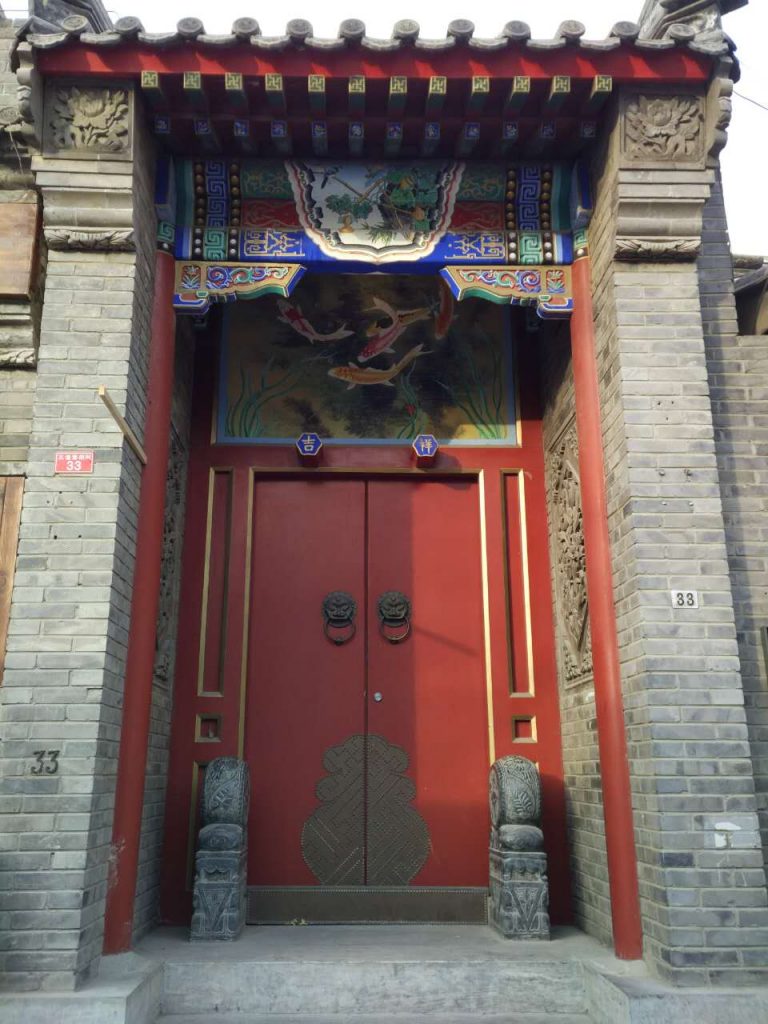北京的胡同
在一個自己沒有課並且天空沒有霧霾的某一個周五, 我決定抓住機會去多多探索一下北京著名的胡同. ‘胡同’ 這個詞指的以前結連四合院的巷子, 一想到這個詞, 大部分中國人都會想到他們首都的建築. 在歷史上,北京 的胡同到處可見, 從接近紫禁城的寬大弄堂到老百姓所住的窄狹, 縱橫交錯的形象.
到了中華人民共和國的成立時, 很多人選擇從他們破敗的舊居搬到新建的, 能提供現代便民設施的公寓. 隨著人民拋棄胡同的趨勢, 以及北京人口大幅的增長, 越來越多胡同被拆了, 讓路給新的建築. 北京政府意識到這些巷子所擁有的歷史上的意義和無法取代的價值, 他們開始實施保護這些古老街道的計畫, 因此來北京的遊客還能看到首都幾百年前的樣子.
據我所知, 本城市的胡同現在大概分三類 : 第一個是給遊客的, 第二個是擁有新青年風味的, 第三個是住宅區. 我那天我從永和宮走到後海, 路過的胡同大概符合了最後兩個類型的胡同. 在五道營胡同, 搖滾酒吧位於傳統門口的旁邊 – 帶著有點國際化的感覺. 走到鄰近胡同的時候, 氣氛突然變了 – 舊門口雙側的對聯上落一層灰塵, 路邊的電動車和自行車擁擠了, 這個地方沒有那附近的胡同那麼福有, 那麼乾淨, 但也許因此更擁有老北京的滋味.
對於胡同來說, 我最欣賞的一點, 是他們融入新與舊的能力. 由於這些巷子一直以來擁有的實際性, 現在 人民能稱呼他們為 ‘活著的歷史’, 不僅僅是一無用的古代文物而已. 雖然北京的人口不停地增長, 故而城市的面積越來越密集, 我卻希望北京市政府會繼續保護這些擁有國家文化以及古老風味的胡同, 讓更多的人看到以前傳統生活的樣子.

hutong-doorway
ENGLISH:
Hutongs of Beijing
On a Friday when I had no class, and the sky had no clouds of pollution, I decided to take the opportunity to explore Beijing’s famous hutongs. A hutong is the name for the alleyways which link together traditional Chinese courtyard houses – when Chinese people think of this image, they automatically associate it with the cityscape of Beijing. In the past, the city was covered with these passageways, from the broad lanes between the houses of the rich near the Forbidden City, to the cramped, criss-crossing tiny passes where ordinary citizens lived.
When the PRC was established, many people decided to leave their old homes and move to newly built apartments, fitted with modern amenities. As more and more people abandoned their courtyard houses, and the population of Beijing boomed, many hutongs were pulled down to make way for new buildings. The city government recognised the irreplaceable historical value of these streets, and began to put in place measures to protect them, thus meaning that visitors to Beijing can today still see those alleyways from hundreds of years ago.
From my travels around Beijing, it seems the surviving hutongs fit into roughly three categories: those for tourists to visit, those which have a hipster, gentrified feel to them, and those which are still residential areas. That Friday I walked from Yonghegong to Houhai, and passed several hutongs which mostly fit the last two categories. At Wudaoying hutong punk rock bars are nestled next to traditional painted doorways – it feels like a melting pot of people, music and cultures. Carrying on to the hutong linked on to it however, the atmosphere is completely different – posters of New Year couplets hung up next to the doorways are covered in a layer of dust, the road is filled with motorbikes and delivery men. This alley is not as well-off or tidy as the one next to it, but probably is closer to the feeling of ‘old Beijing’.
What I like most about hutongs is that they blend new and old together. Since these lanes have always been used for a practical purpose, they can be considered an example of ‘living history’ rather than historical relics. Although the population of Beijing continues to increase, and the city becomes more and more crowded, I hope the government continues to protect these streets, and allow more people to see what traditional Beijing life would have been like.
